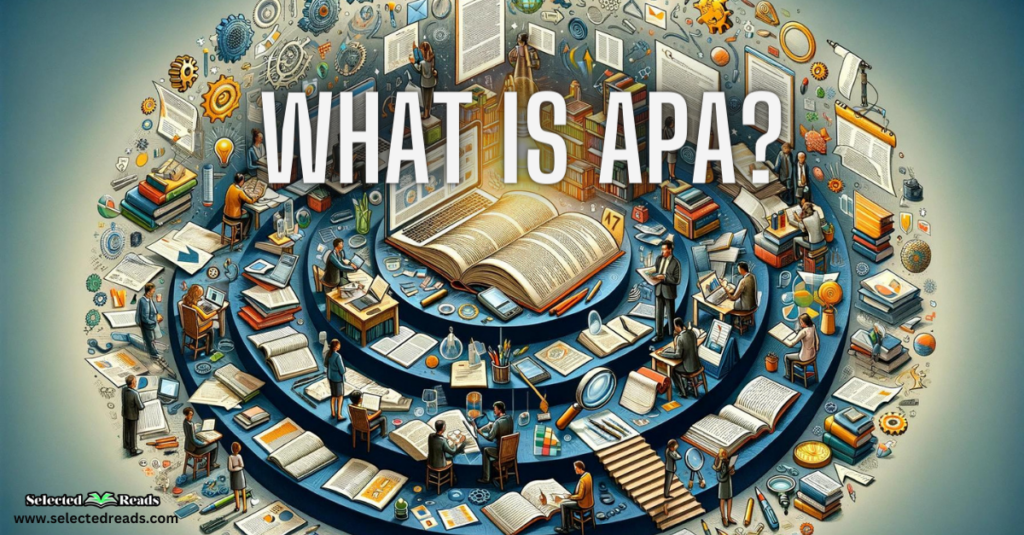In today’s post, I am delving into the world of APA Style, a cornerstone of academic and scholarly communication. The purpose of this exploration is to briefly introduce you to this concept, explain what it is, and highlight its significance in maintaining clarity and consistency in scholarly writing.
APA Style, while often associated with psychology, finds its application across a wide range of disciplines, from education to the social sciences. Our discussion will proceed as follows, first a short introduction of APA style taken from the official APA manual. Next, I talk about why writing styles are important, then conclude with a handful of resources to help you learn more about APA.
What Is APA Style?
APA stands for the American Psychological Association. APA Style is a “set of guidelines for clear and precise scholarly communication that helps authors, both new and experienced, achieve excellence in writing” (APA, 2020, p. xvii). APA Style is used in different disciplines from psychology to education. It is basically used to write: manuscripts for publication, dissertations and theses, research papers, and student papers.
APA Style guidelines are communicated through The Publication Manual of the American Psychological Association. Once in a while, a new edition of the publication is published with new updates and guidelines. As of writing these lines, the 7th edition is the most recent published edition. If APA is your style manual of choice and unless otherwise instructed by your professor or institution to use a specific APA edition, your writing should stick to the guidelines in the 7th edition.
Related: Best Books on Research Ethics
Why APA Style?
Rules and guidelines create order and order is key to creating an environment where people, regardless of their differences, come together around shared principles that govern their life. Often, absence of rules results in anarchy. When it comes to scholarly writing, APA Style (along with other styles) is what brings order to our communication.
Can you imagine how hard communication would be if everybody uses their own guidelines to write and publish. You will need to spend so much time and effort understanding one’s guidelines before you can understand their ideas. APA Style solves this problem. It offers a set of agreed-upon guidelines and rules that together provide a common language for scholars to clearly communicate their knowledge.
These guidelines manage all aspects of the process of knowledge production, from ethical compliance to citing sources. “When Style works best, ideas flow logically, sources are credited appropriately, and papers are organized predictably and consistently” (APA, 2020, p. xvii).
In this way, readers are not only likely to understand your work but, if they choose to, will also be able to replicate your research methodology to prove or disprove your findings. It is in this mutually inclusive way that the repository of human knowledge has been able to develop and grow.
APA Resources
Here are some key resources to help you learn more about APA:
1. Publication Manual of the American Psychological Association 7th Edition, by American Psychological Association
This is the most recent edition of the Publication Manual where you can access APA guidelines on how to write concisely, clearly, and inclusively. The “Publication Manual also offers guidance on choosing the headings, tables, figures, language, and tone that will result in powerful, concise, and elegant scholarly communication. It guides users through the scholarly writing process—from the ethics of authorship to reporting research through publication. “
2. The APA Style website
This is the official website of APA where you can access free resources, instructional guides and supplemental materials referred to in the Manual such as additional reference examples, sample papers, and more.
3. The APA Style Blog
The APA Style Bog is where you can access tutorials and step-by-step guides. You will also find answers to several questions related to the use of APA guidelines from how to cite a website in APA to how to cite an untitled music album reference.
4. The JARS website
JARS is a collection of guidelines created to help journal authors, reviewers, and editors to “enhance scientific rigor in peer-reviewed journal articles. Educators and students can use APA Style JARS as teaching and learning tools for conducting high quality research and determining what information to report in scholarly papers.”
Final thoughts
Navigating the intricacies of APA Style can significantly elevate the quality and clarity of your academic writing, ensuring that your work not only adheres to the highest standards of scholarly communication but is also accessible to a broad audience. As we’ve explored the essence and importance of APA Style, it’s clear that these guidelines serve as more than just arbitrary rules; they are the foundation for creating a shared understanding and facilitating meaningful discourse in the academic community. Whether you’re drafting a manuscript for publication, preparing your dissertation, or compiling research for a class assignment, the resources mentioned—ranging from the latest edition of the Publication Manual to the comprehensive support offered by the APA Style website and blog—provide invaluable guidance.








